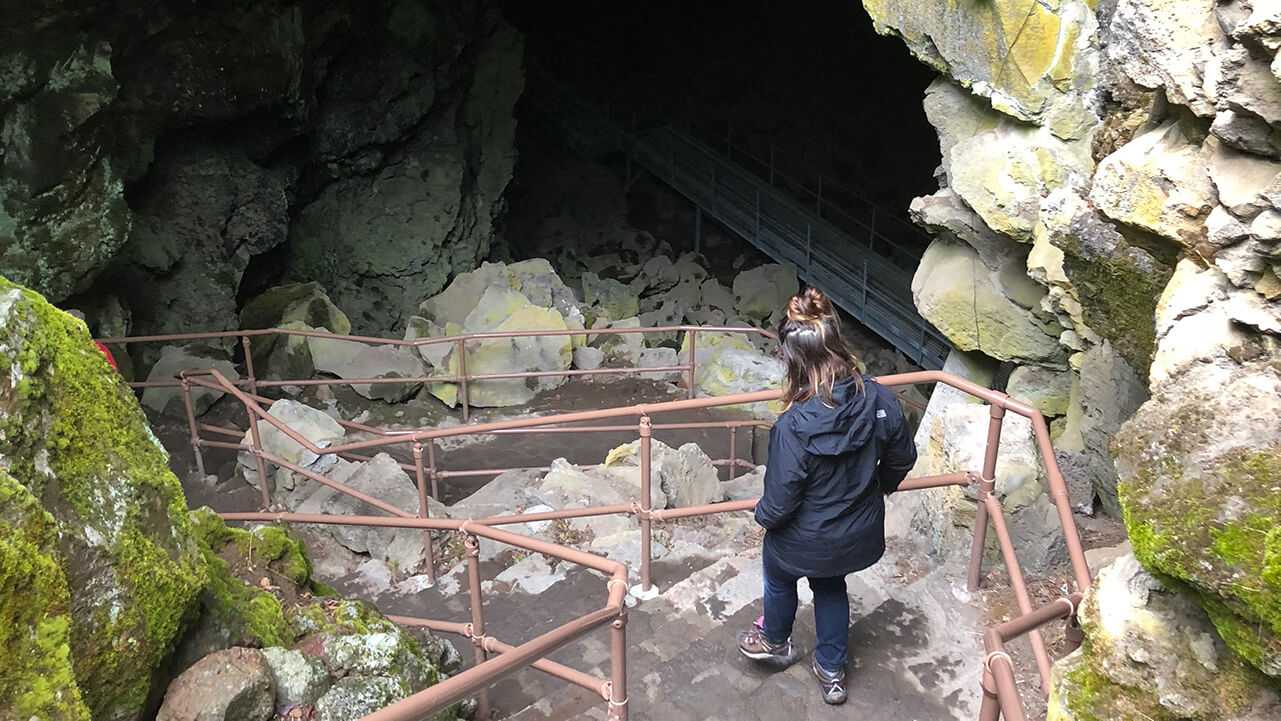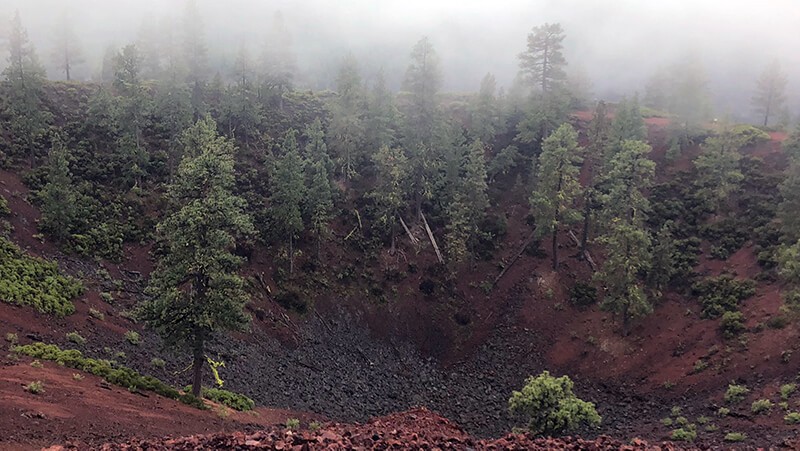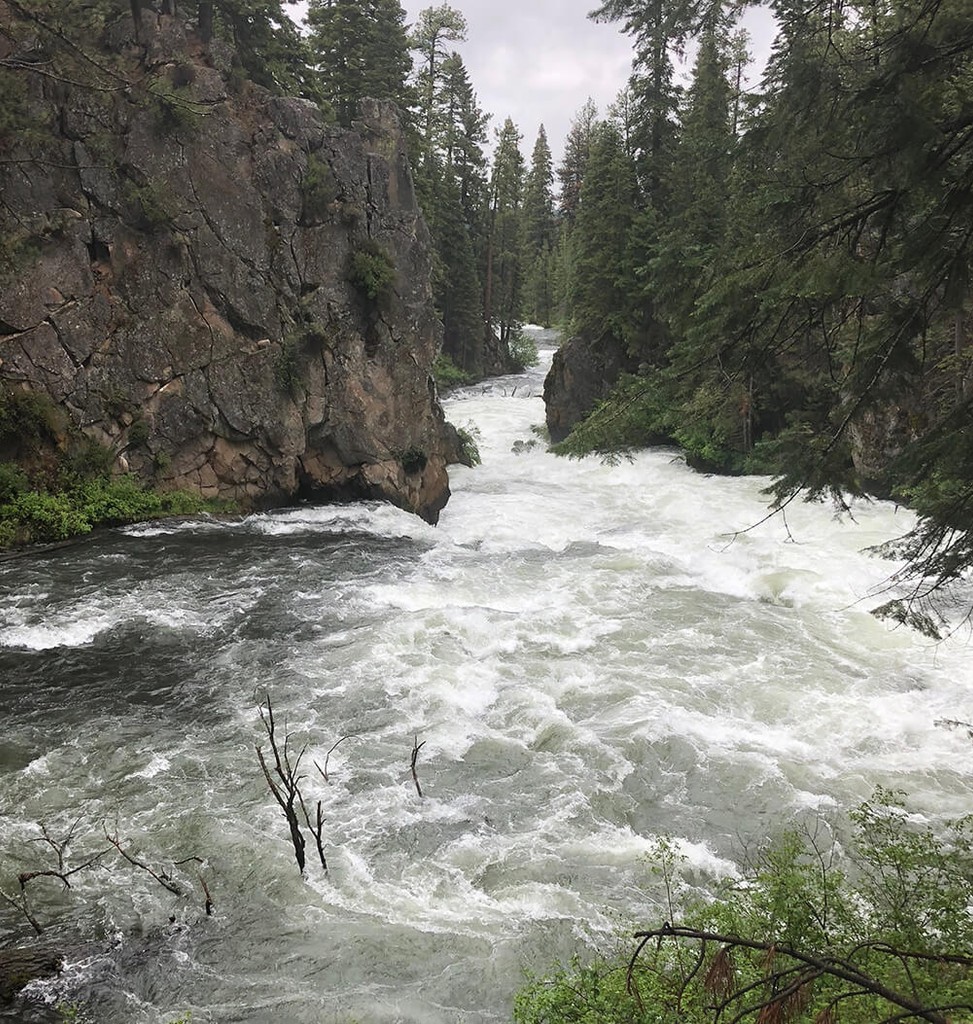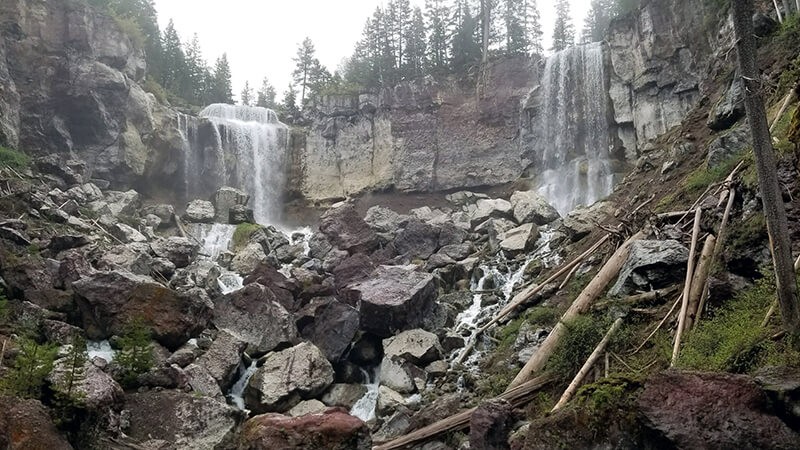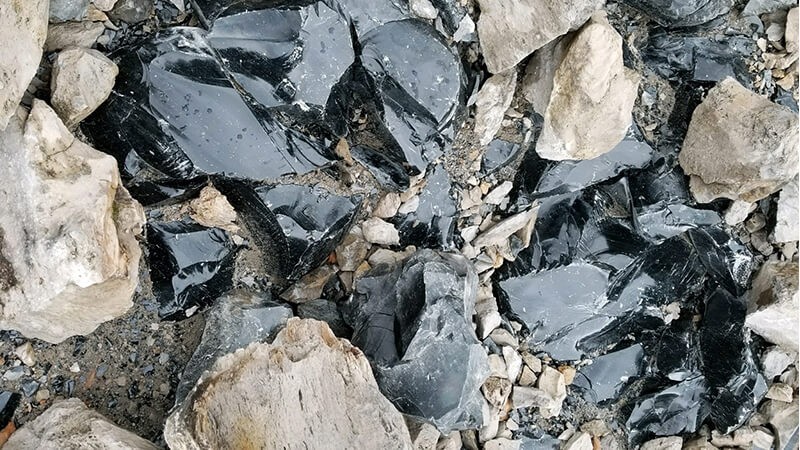Newberry National Volcanic Monument was the first on our Bend, Oregon trip. It was five minutes from our Airbnb and we’ve heard so much about this geological gem in central Oregon. The 54,822-acres of the Newberry National Volcanic Monument are home to waterfalls, lava flows, peaks, and lakes that were created about 7,000 years ago when Lava Butte last erupted. Lava Lands was used in the 19060s by NASA to imitate what NASA thought the moon’s surface would be like.
Lava Lands
Loava Lands visitor center is the hear of the Newberry National Volcanic Monument. This visitor center displays an interactive timeline of how the Newberry National Volcanic Monument came to be. Each park ranger was keen to pass on information about the volcanic terrain.
Behind the Lava Lands Visitor Center is the Trail of Molten Lands. This lava field is known for NASA training astronauts to walk on the moon. The trail is paved now but craves through the rocky and unstable terrain. I could easily understand why they used this area after taking a stroll. The whole time I felt like I was walking another planet.
Lava Butte
Lava Butte is located 600 feet above Lava Lands Visitor Center. The couple mins drive up the spiral will put you on top of the peak where the eruption happened 7000 years ago. Once we reached the top, we walked around the 150-foot deep crater rim while taking in the view of central Oregon. Unfortunately for us, the weather wasn’t too great so we didn’t see much.
Benham Falls
After trekking to the top of Lava Butte, we decided we wanted to do a short but beautiful hike. Benham Falls is rapids created from the last eruption of Lava Butte. The hike is 1.5mi roundtrip hike along the Deschutes River to an overlook of an s-turn with rapids. Due to weather, we had the trail mostly to ourselves. It started to rain a little bit on our way back from the falls.
Lava River Cave
Our plan was to the hit the save once it started raining. We timed the weather well and made our way to the Lava River Cave. The mile-long cave is open to visitors from 9-5pm during tourist season. The trip total is estimated 1.5 hours which is how long it took us. The cave is one of the main attractions so prepare accordingly during the holiday season.
The park rangers gave us a rundown of the cave. We were required to wear closed toe shoes and dress warmly. We were informed of White-nose Syndrome affecting bats which is a disease that hasn’t spread to central Oregon. To help to prevent the disease from reaching the Lava Caves, we were asked not to wear any clothes that have been in a cave before. We descended down the stairs into the pitch black cave with a lantern we rented for $5 at the entrance. The next two hours were spent exploring the save and trying to experience absolute darkness.
Paulina Falls
Tweny miles south of the Lava River cave laid our next destination, Paulina Falls. A steep hike down 1/4 mile to reach the upper view of both the falls. From here, you can go down another 1/4 mile to the lower end of the falls that puts you at the base of them. The hike was super short but has a steep grade. Well worth it for a quick hike with beautiful falls.
Big Obsidian Flow
Last on our list today was the Obsidian Rock Flow trail. The flow only just 1,300 years old holds the title for youngest lava flow in Oregon. We spent about an hour walking through the desolate landscape of obsidian and pumice. The black glass rock was something cool to see in the middle of the lush landscape surrounded by lakes. Walking through here gave me the feeling of being on another planet. Definetly worth checking out to see such a arare landscape.
